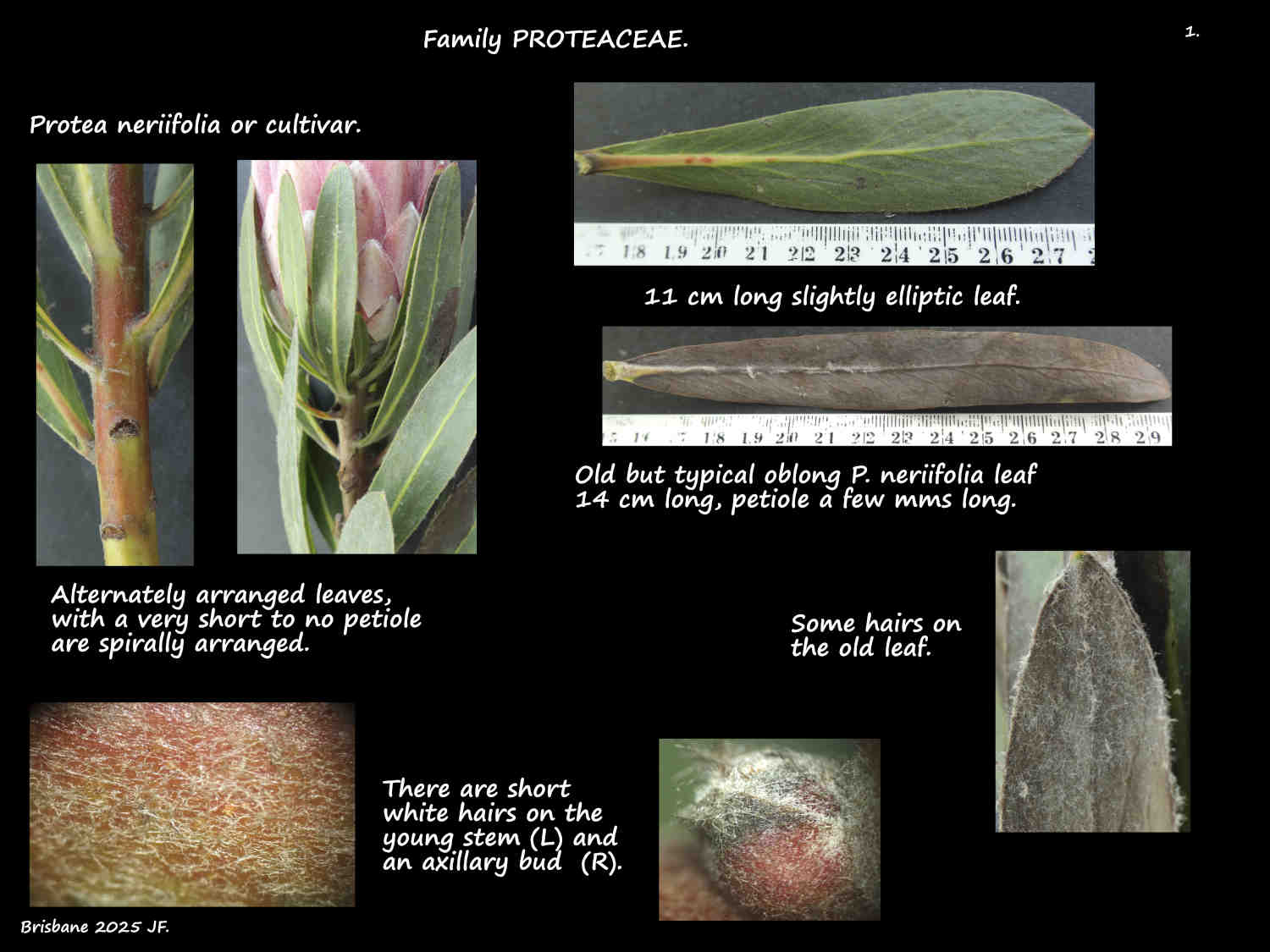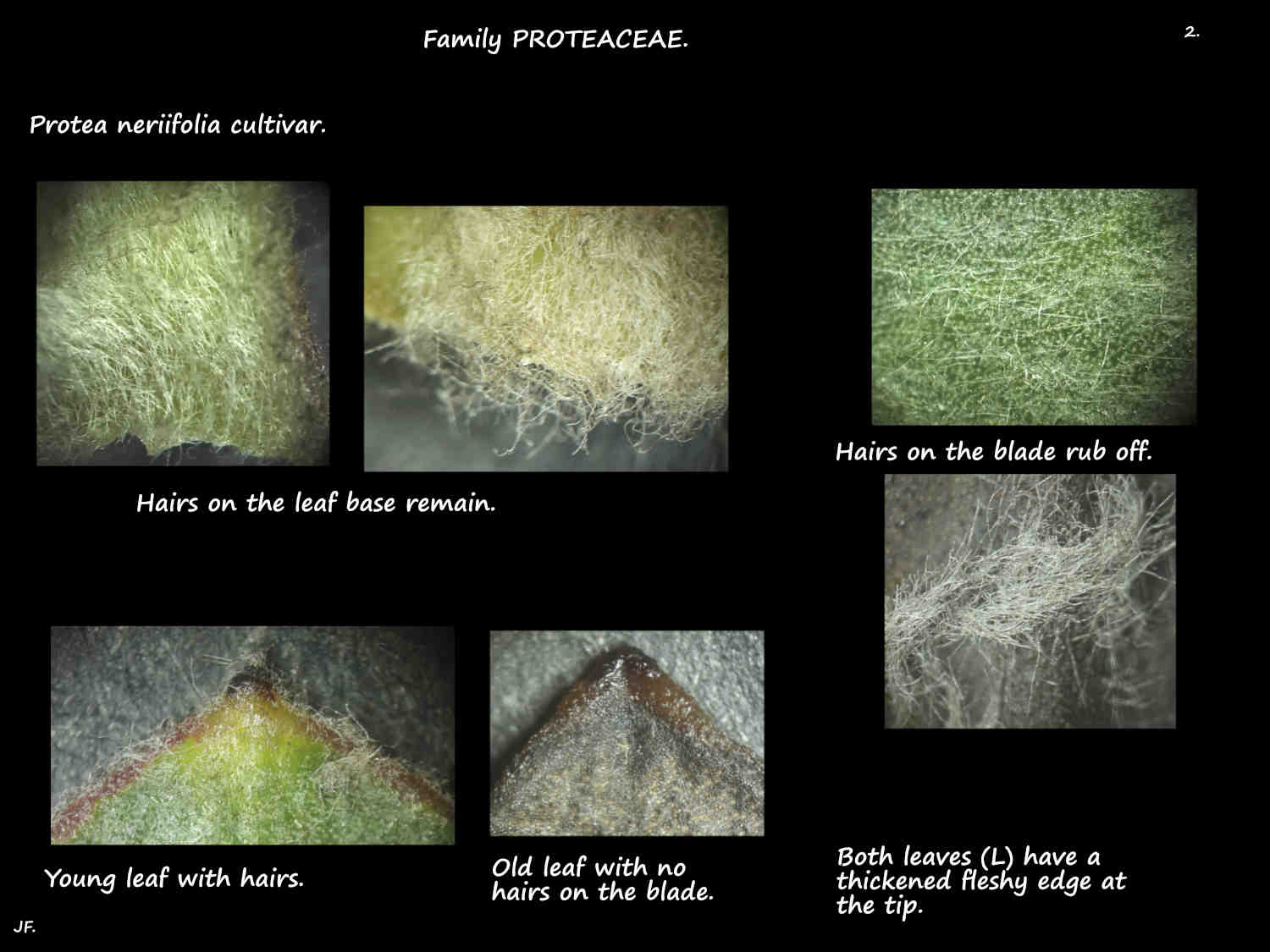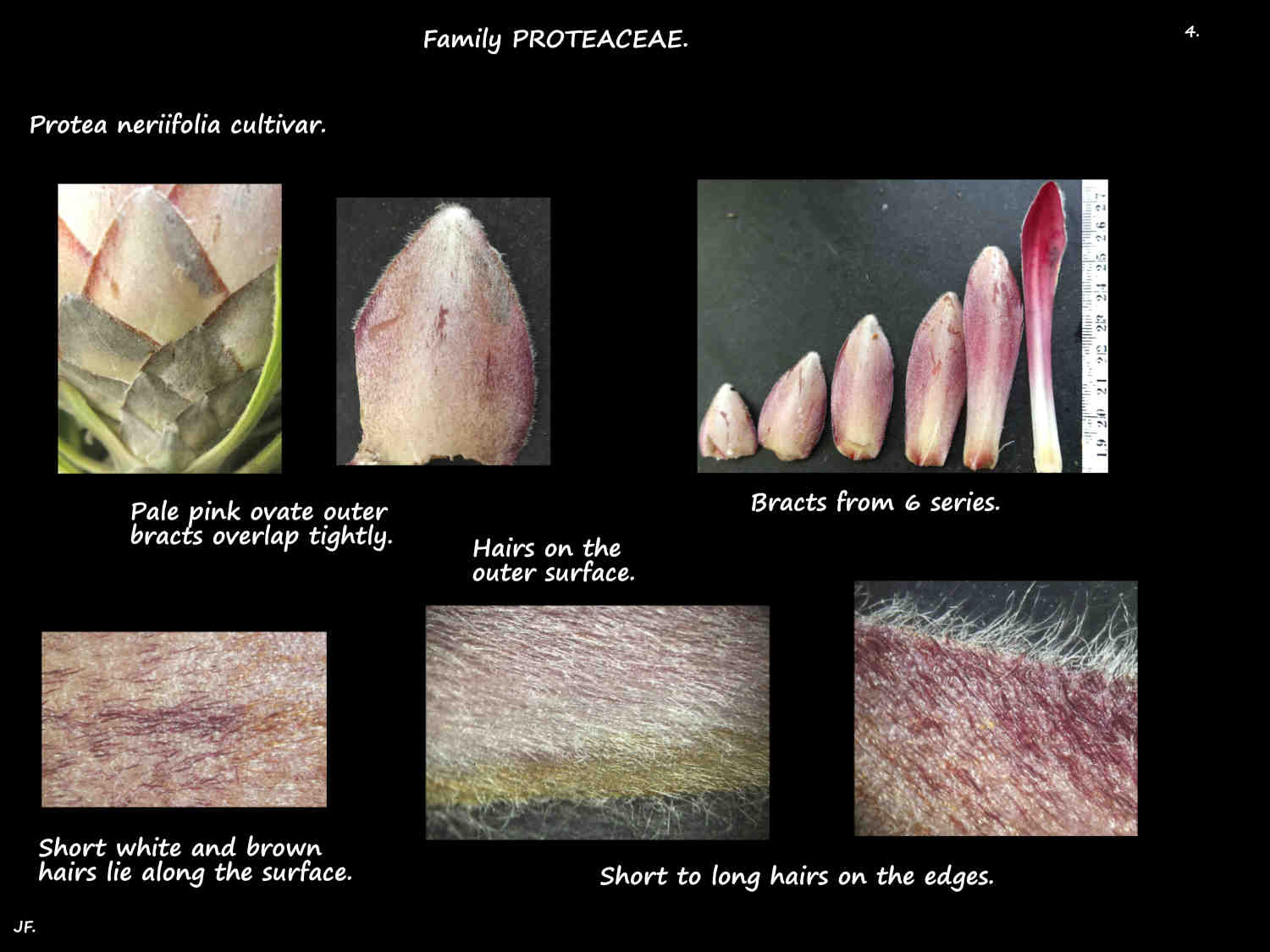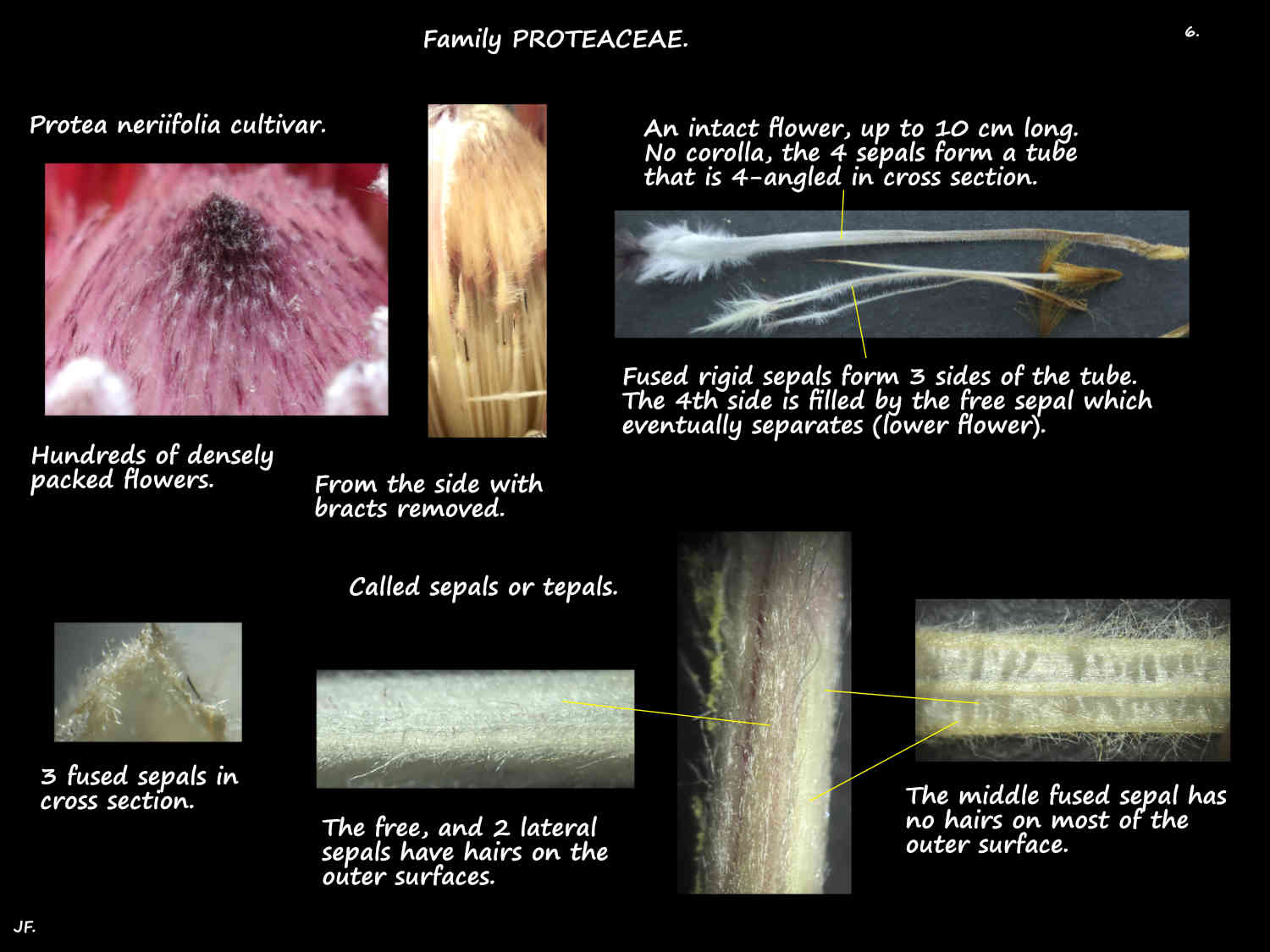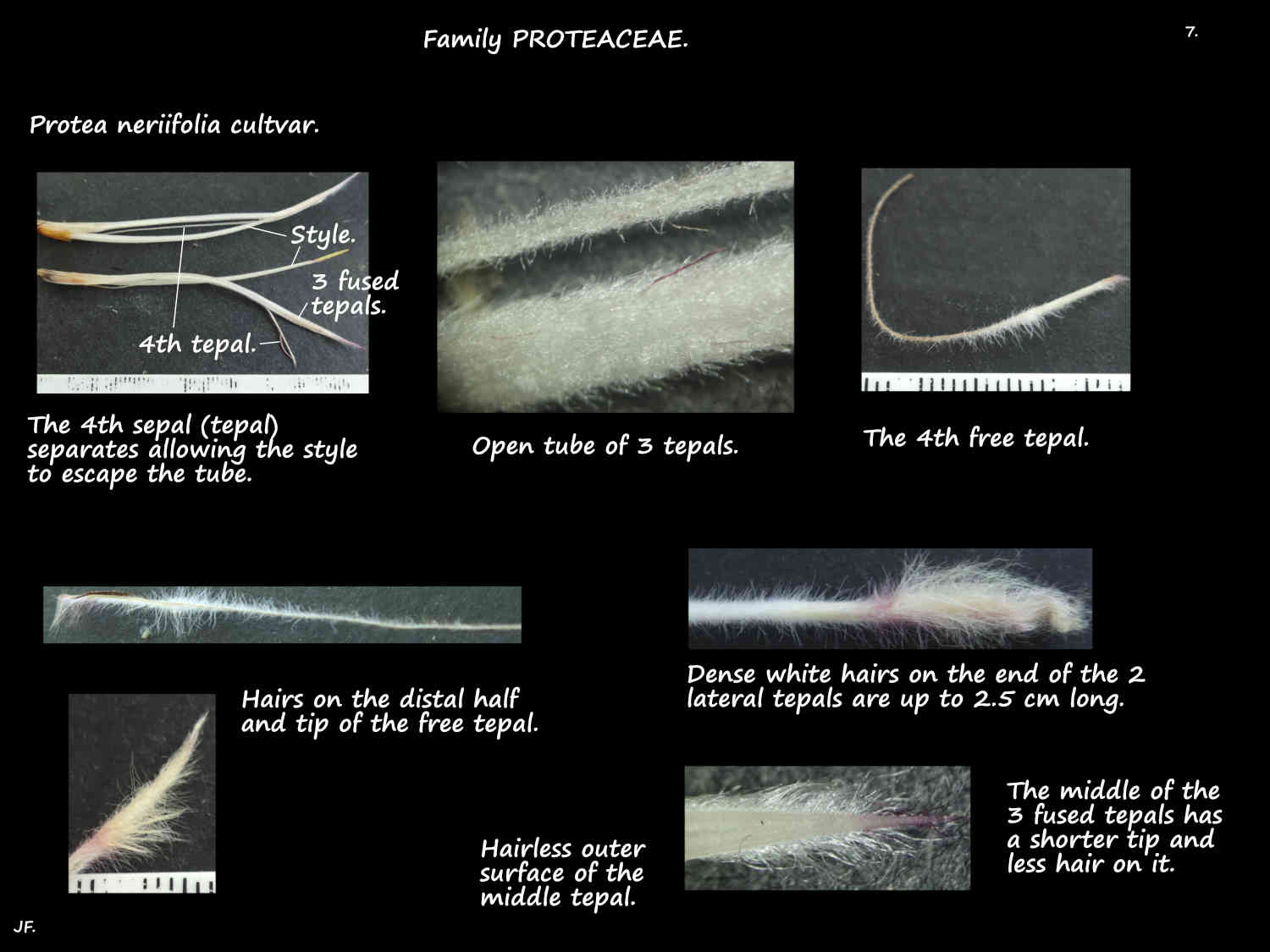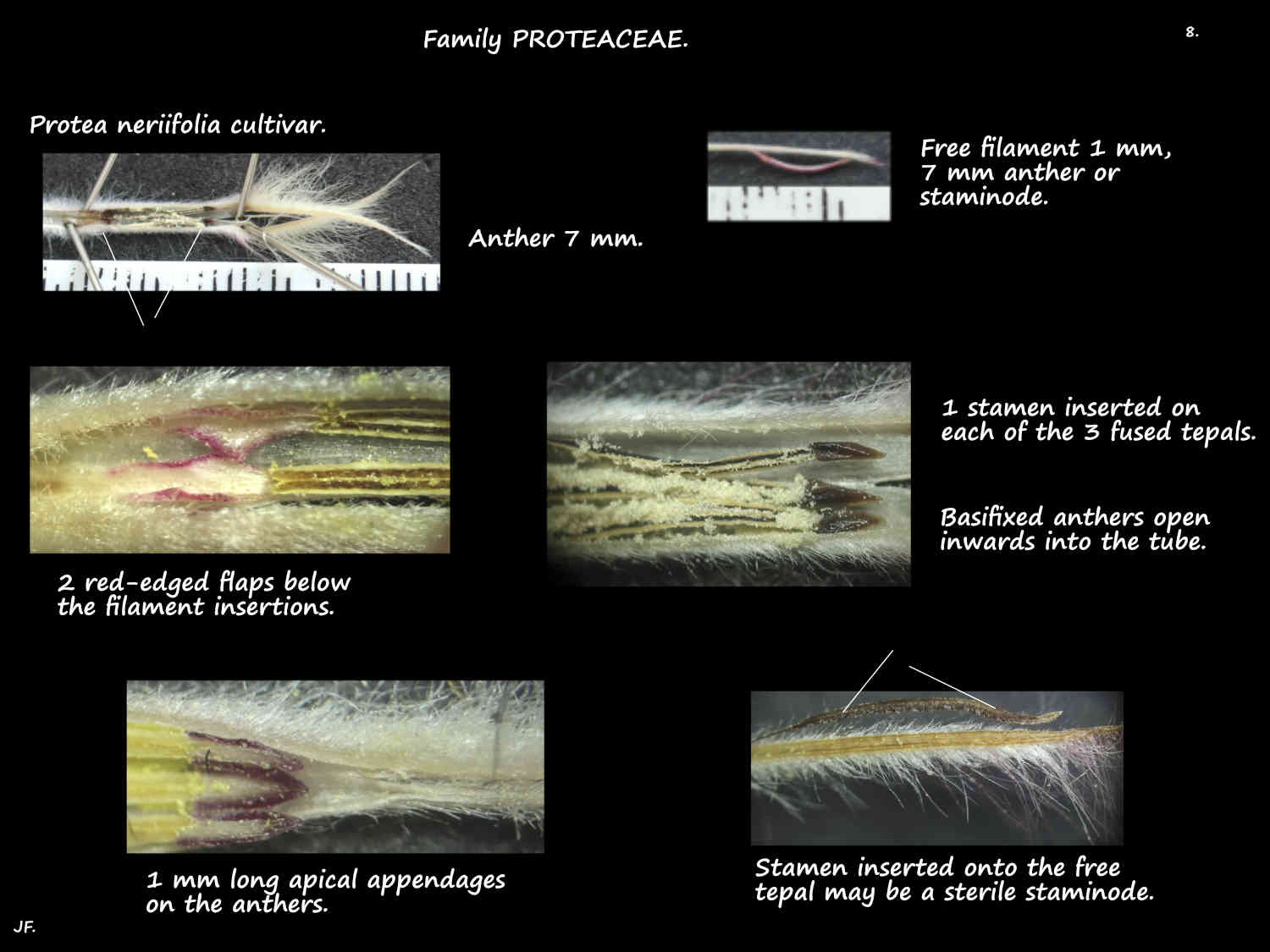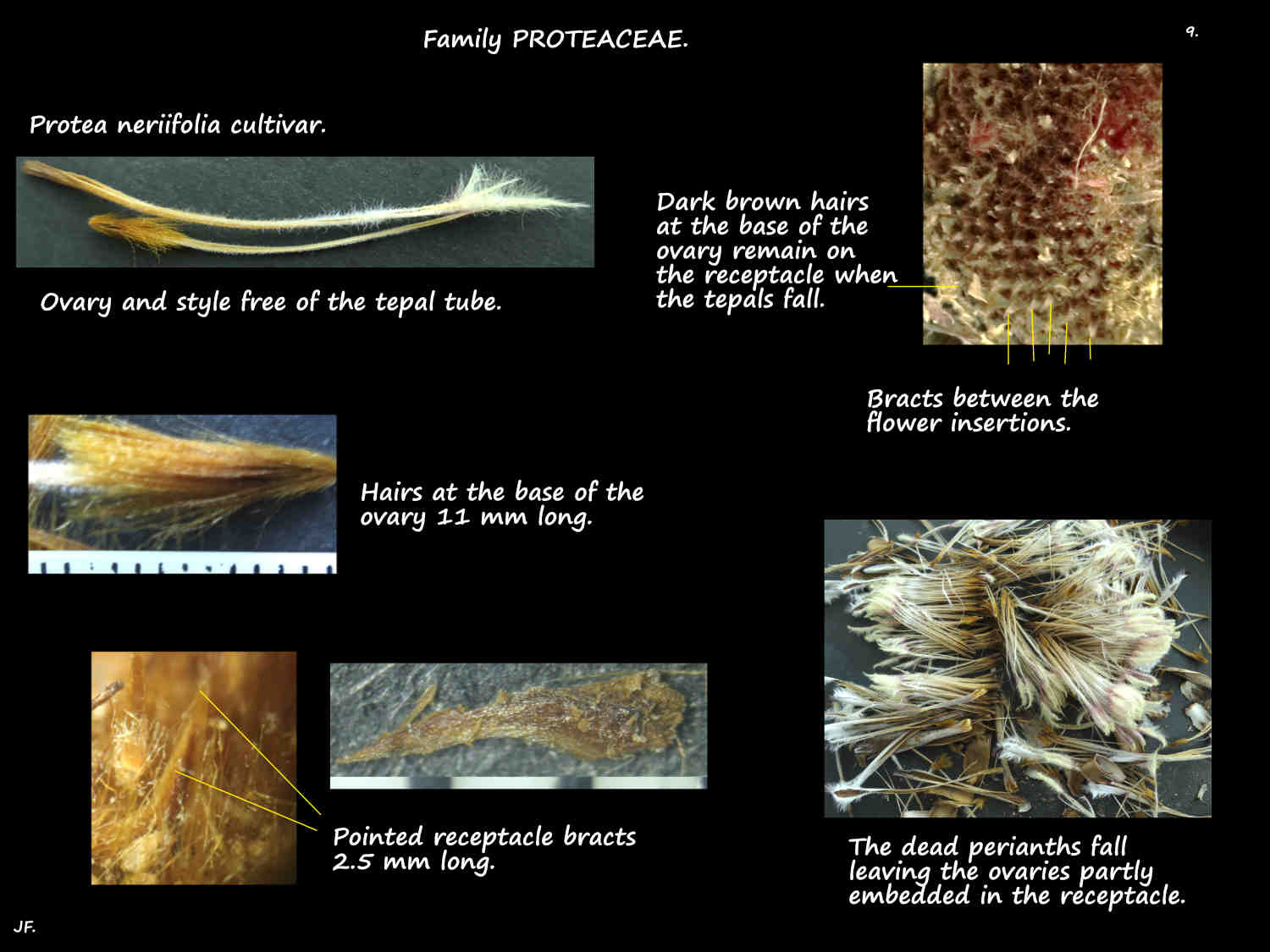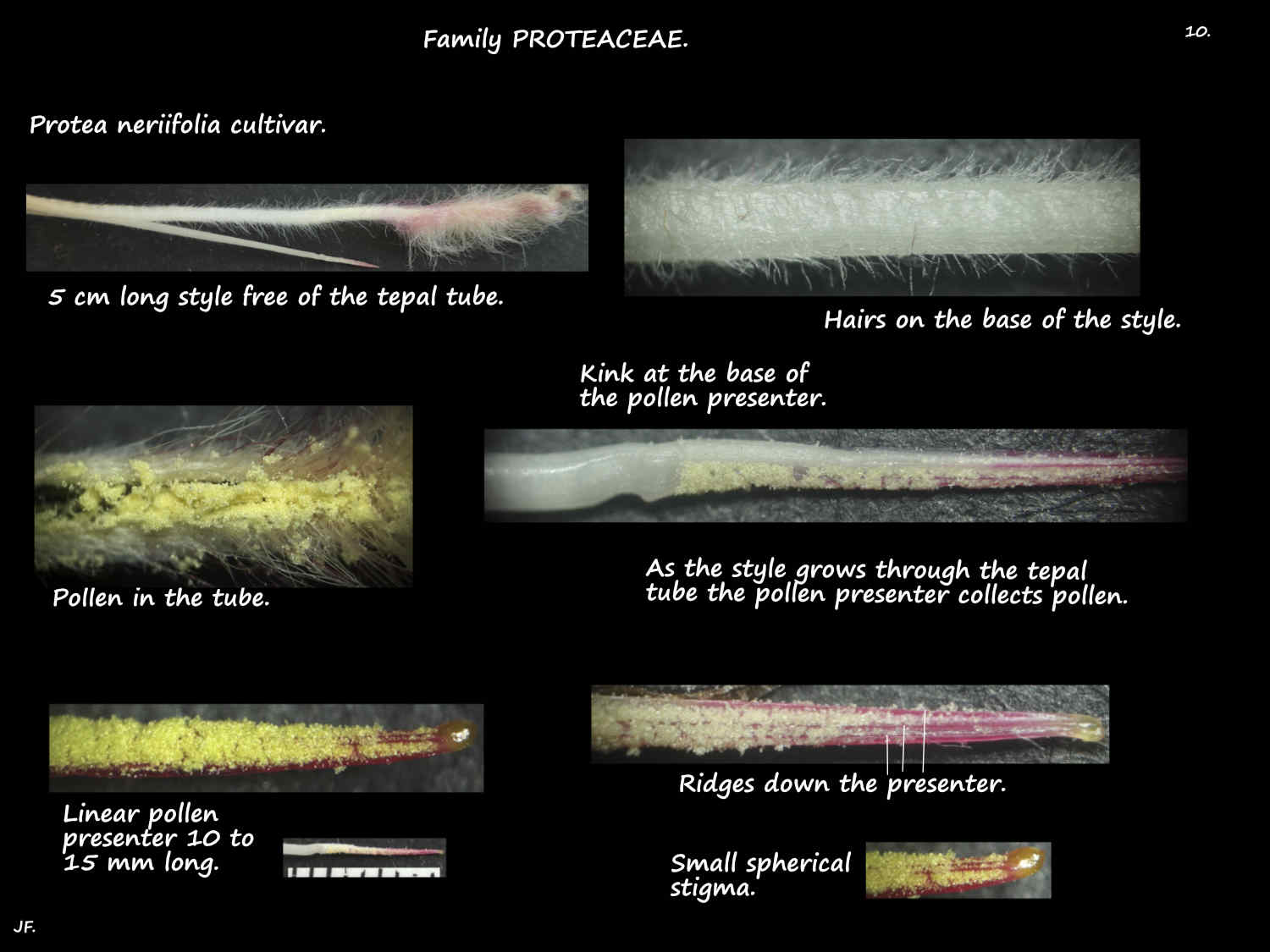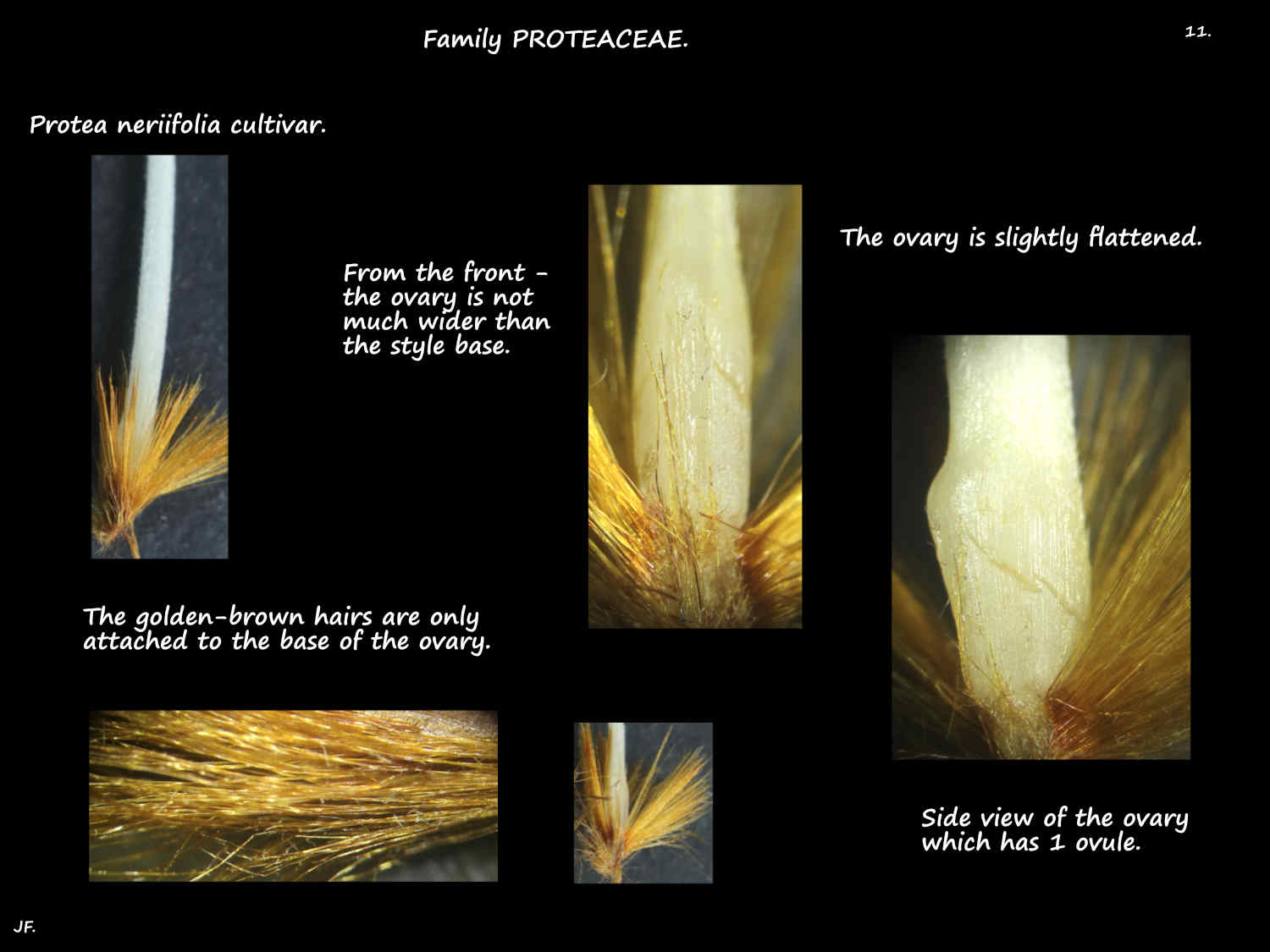Protea neriifolia.
From South Africa it is known as the Narrow or Oleander-leaved sugarbush.
It is an erect shrub up to 3 m high or a small tree to 5 m.
When a shrub it has a single trunk with branches close to the ground.
Young stems have pale brown hairs but these are gradually lost.
Alternately arranged leaves have no petiole or one a few mms long.
The green to blue-grey leaves, up to 18 cm long and 3 cm wide curve upwards.
They are narrow with nearly parallel sides (oblong).
At the base the blade narrows abruptly to a wedge-shape.
Young leaves have hairs all over but old ones mostly at the base.
Terminal inflorescences are an oblong (or inverted cone-shaped) head.
Heads are up to around 12 cm long and 7 cm wide.
They are on a convex receptacle (top of the stem).
On it are the densely packed flowers surrounded by involucral bracts.
There are up to 7 series of spirally arranged bracts.
The smaller outer ones are 1 to 1.5 cm long and the innermost around 10 cm.
The tightly overlapping outer bracts are ovate.
Inner bracts are oblong then spatula-shaped.
All can be pink to red, white, cream or pale green.
The outer surfaces may have pale hairs that lie along the surface.
The inner surface is smooth and shiny.
A characteristic feature is the black fringe of hairs at the tip.
These hairs, up to 1 cm long are sometimes white or a varying mix of black to white.
The slender tubular flowers are up to 10 cm long.
Above the base the 4 tepals form a roughly square tube.
Three sides are formed by stiff tepals that are fused.
The 4th soft flexible tepal is free but makes the 4th side of the tube.
Of the 3 fused tepals the outer surface of the middle one is flat and hairless.
The 2 firm side tepals have white hairs almost all over the outer surface.
Dense brush-like hairs on the tips of the 2 lateral tepals can be up to 2.5 cm long.
Hairs at the tip of the middle tepal are fewer and shorter.
The 4th free tepal also has long apical hairs.
The 4th tepal usually separates from the other tepals.
The 3 fused tepals each have 1 stamen and the 4th tepal has a staminode.
The stamen filaments are fused to the tepals.
The roughly basifixed anthers are free and open inwards through long slits.
The 4 mm high superior ovary has 1 cm long golden-brown hairs attached near the base.
The around 6 cm style has short white hairs at the base.
It has a small stigma at the tip.
Below the stigma is a linear pollen presenter around 8 mm long.
Below the pollen presenter there is a marked kink in the style.
As the style grows through the tepal tube the pollen presenter collects pollen.
The style separates from the tube exposing the style and stigma.
The fruit is a densely hairy nut.
This species is commonly used in the production of cultivars.
For example the deep rose-pink ‘Pink Ice’ Protea is a cross between Protea neriifolia and P. susannae.
J.F.

